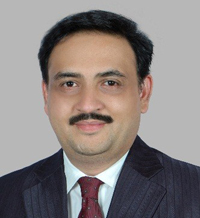Salafi-Jihad in Kashmir: New Cat among the Pigeons
For a long time Indian strategists have sought to devise a credible strategic communications programme against the devious indoctrination of the vulnerable sections in Kashmir society by Pakistan and Pakistan-controlled terror groups, which has increasingly taken on a religious colour, but is mainly directed at weaning the state of Jammu and Kashmir away from India.
However, in the absence of any effective public relations or ideological counter-narratives campaign, it is ironic that the act of discrediting Kashmiri secessionism has come from a highly unlikely quarter.
Salafi jihadi groups, particularly ISIS operatives, using social media apps like Telegram have been quite busy these days denouncing the so-called Kashmir independence movement as ‘un-Islamic’. To them, jihad should not be conducted for nationalistic reasons but instead waged solely to please Allah (what they call ‘jihad fi Sabilillah’), which, in practical terms, implies the imposition of the most Salafized version of Shariah. According to the transnational Salafi terror outfits, the championing of democracy by Kashmiri separatists and leaving the character of the political dispensation of a prospective breakaway Kashmiri state to the will of its people delegitimizes the Islamic credentials of the movement.
In addition, the methods and means adopted for the so-called resistance by segments of the Kashmiri populace has also come under criticism by the purveyors of global jihad. Thus, ISIS elements have denounced the participation of Kashmiri women in stone-pelting activities against Indian soldiers, which, to them, violates the conservative Islamist norms regarding Muslim women’s conduct in public life.
Pakistan’s provision of support to the secessionist Kashmiris is also denounced as irreligious by the ISIS and Al-Qaeda, because, in their view, the state of Pakistan is an ‘apostate’ power, in that it has avoided the full implementation of Shariah rule and has ostensibly sided with the international coalition against terror.
This growing vilification of the Kashmiri movement by Salafi-Jihadi terror groups is a part of their overt radicalization attempts aimed at hijacking the sub-nationalist insurgency. There is a new cat among the pigeons! In fact, there are early signs of doctrinal wedges appearing among the jihadist outfits operating in the valley and this ideological dissonance is intended to prepare the ground for a turf war between the forces of jihadist globalization and the indigenous secessionist leadership represented by the Hurriyat.
The ideological wedge has widened to the extent that Burhan Wani’s successor as the leader of Hizbul Mujahideen in Kashmir, Zakir Musa, has himself quit the organization. Following the Salafi-jihadi line of jihadism, he has called for the creation of an Islamic State of Jammu and Kashmir. In this action, Zakir has reportedly drawn the support of two other militant outfits — Harkatul Mujahideeen (HuM) and Kashmir Taliban.
The confusion among the Pakistan-backed jihadi groups and Kashmiri secessionist forces over the growing ideological influence of the ISIS and Al-Qaeda on the trajectory of the movement is palpable in the Hurriyat’s recent strongly-worded condemnation of ISIS and other foreign jihadist groups. A portion of the joint statement issued by the three main Hurriyat leaders – Syed Ali Geelani, Mirwaiz Umar Farooq and Yasin Malik – posted on the coalition’s website on May 8 reads, “Our movement has nothing to do with these world level groups (Al-Qaeda, ISIS etc.) and practically they are non-existent in the state. There is no role for these groups in our movement.”
But the statement does not stop at dissociating the movement from global jihad. In order to fend off disturbing Islamist claims, Hurriyat leaders have resorted to blaming their ‘Other’ (i.e. the Indian government) for even this alleged ‘conspiracy’. This can be seen from the following sentences on its web portal: “Authorities in Delhi have now started to play a vicious game under the garb and label of ‘holy war’. It is a ploy to create a wedge between people and brave hearts, said they (sic). Quoting reliable sources, leadership disclosed that agencies are hiring some sick minded and Ikhwan type goons (sic) and they have been assigned the task for creating chaos in state.”
The outrageous conceit of placing the blame for ISIS’s criticism of the Kashmir movement on the Indian government in order to defend the indefensible, inane and ludicrous as is, only highlights the heightened sense of unease and desperation among Hurriyat leaders in the wake of their receding credibility among the Kashmiri masses.
It is to be noted that this Salafi-jihadist ideological salvo comes at a time when there is growing resentment among young Kashmiri radicals, who are questioning the commitment of the Hurriyat leaders towards their avowed cause. Writing on a secessionist website dubbed Kashmir Despatch, a purported resident of the province going by the name Inamur Rahman has criticized Hurriyat leaders of being engaged in pointless academic pursuits at a time when the insurgency was at its most critical moment. He criticises Geelani for having the time to write and release a book on 20th century poet Sir Muhammad Iqbal in April 2017 even as the civil strife following Burhan Wani’s death last year petered to an inconsequential end. He then refers to Mirwaiz Umar Farooq’s PhD, which was on a 14th century saint rather than on the ongoing Kashmir conflict. The author claims, “This shows how much the Hurriyat is disengaged, disinterested and disconnected with the masses.”
Do these developments point to a gradual shift in the ideological drivers of the Kashmir insurgency? Does it mark the decline of the self-styled leaders of the Kashmir uprising and the emergence of a more rabid, extreme global Salafi-jihadist movement? Will this trend gain momentum and alter the course of the secessionist movement? Answers to these question are essential if the Indian authorities are to successfully navigate these treacherous waters in the times ahead.
Views expressed are of the author and do not necessarily reflect the views of the IDSA or of the Government of India.




